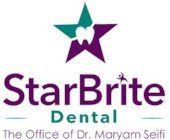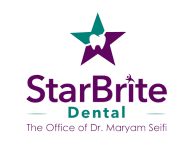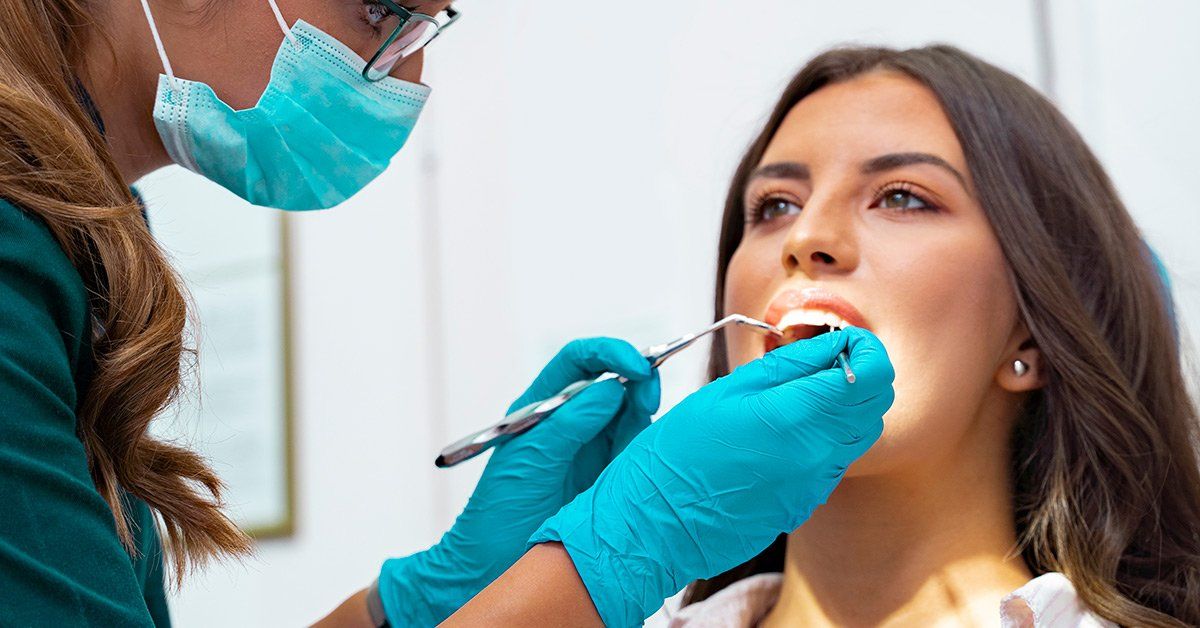What You Need to Know About Tooth Erosion
Have you been told you are suffering from tooth erosion? If you learn how and why this problem occurs, you may be able to stop any further damage. In most cases, tooth erosion is caused by poor dietary habits or treatable medical conditions. Save your teeth by gaining a little knowledge.
What Is Tooth Erosion?
Tooth erosion is the loss of the hard enamel of the teeth as result of their exposure to acids.
How is erosion different from decay? We’re all familiar with the way that bacteria remaining on the teeth creates plaque that attacks the hard enamel of your teeth. This process eventually results in tooth decay. This decay breaks down the enamel, creating a cavity that can eventually make its way to the inner part of the tooth.
There’s no decay directly involved with erosion. With erosion, the tooth is repeatedly exposed to different types of acids that eat away that hard, protective layer of enamel. Basically, the acids are dissolving the enamel of your teeth.
Understanding the layers of your teeth helps one understand tooth erosion. Here are the three layers of your teeth:
- Enamel: The outermost tooth layer, enamel, is the hardest substance in your body. It protects the soft, live tissues inside your tooth. It is durable and insensitive.
- Dentin: The next layer down is the dentin. This layer is softer than the enamel and it is sensitive to heat and cold.
- Pulp: In the middle is the living pulp. This soft tissue contains nerves and blood vessels.
Over time, acids can eat through the enamel and expose the dentin. A tooth that suffers erosion becomes more sensitive because the dentin has been exposed.
Once the enamel is damaged by tooth erosion, the tooth immediately has less protection. It is much easier for decay to attack the tooth and damage the inner tissues, which can damage the tooth and the nerve.
Why Enamel Erosion Happens
We all expose our teeth to acids. It’s a normal event resulting from drinking acidic beverages or eating acidic foods. And basically, there is nothing wrong with that. Our enamel is strong enough to withstand this exposure—up to a point.
When exposure is too frequent or constant and the acids are too strong, our bodies become unable to neutralize that much acid and we begin to lose enamel. By learning the ways our teeth are exposed to excessive quantities of acid and changing this pattern, we can slow or halt the progression of tooth erosion.
Foods and Drinks that Cause Erosion
If you are suffering from tooth erosion or you would like to prevent it, these are the foods that you would be wise to avoid or limit:
- Soda. Soft drinks contain high levels of phosphoric acid. Diet sodas are no better than sodas with sugar. (This is a very common reason for tooth erosion.)
- Fruit drinks. Some fruit drinks are as erosive as battery acid. In particular, lemon and orange drinks are damaging.
- Drinks with high levels of vitamin C. As you may know, Vitamin C is ascorbic acid. And although it is essential to good oral health, Vitamin C has an erosive effect when in direct contact with the teeth.
- Flavored, carbonated drinks. These contain weak acids.
- Fruit-flavored alcoholic drinks. These may contain acidic fruit juice; plus, many are carbonated.
- Sports drinks. If an athletic individual plans to skip sports drinks, they might need to find another way to rehydrate with electrolytes.
- Starchy foods. White bread and foods made with white flour, pasta, potatoes, chips and more.
- Foods that contain citric acid. This includes wine, jams, soup concentrates, caramels, pre-packaged fruits and vegetables.
- Acidic fruits. Apples, lemons, oranges, grapefruit and berries.
- Sugary foods. Candies, ice cream, sweet rolls.
- Chewable vitamin C tablets. As mentioned previously, avoid placing Vitamin C in direct contact with your teeth.
- Acidic foods. Such as those containing tomatoes.
- Dried fruits. They have lots of sugar and stick to your teeth and so generate high levels of acids.
- Sour candies.
These are also almost as acidic as battery acid.
While unflavored, unsweetened carbonated water is slightly more acidic than plain water, it is a far better beverage choice than a sweetened drink. Research has shown that there is not very much difference in the effects of these two waters on your teeth. Some carbonated waters have minerals added or contain naturally-occurring minerals which make them less acidic.
Medical Problems that Cause Erosion
- Gastroesophageal reflux disease (GERD). This condition results when the contents of the stomach rise back up into the esophagus. Stomach acids can then reach the mouth where they cause erosion.
- Repeated vomiting from chronic alcoholism.
- Severe morning sickness. This can result in multiple bouts of vomiting each day.
- Bulimia. People with this eating disorder habitually eat large amounts of food and then self-induce vomiting because of a belief that they are too fat.
There are two other medical situations that can contribute to tooth erosion:
Environmental Factors
Although it is much less common,
environmental exposure to acidic chemicals and fumes can cause tooth erosion. This can happen to people who work in battery factories and are exposed to fumes, or to people who spend lots of time in swimming pools that are not properly monitored for chlorine levels.
Tooth Erosion at the Gumline
When a tooth suffers erosion at the gumline and decay is not involved, this area can become more sensitive to hot, cold and sweet foods and drinks, and is more vulnerable to tooth decay. Mineral loss due to the influence of acidic foods and drinks or exposure to stomach acids are causes of tooth erosion at the gumline. Bruxism (teeth-grinding) is another cause.
What Tooth Erosion Looks Like
The appearance of tooth erosion depends on which part of the tooth you are looking at. Here are some examples:
- The front of the tooth may develop dips, shiny areas or dull areas.
- The grinding surface of the molars can become pitted and may be flattened and smooth rather than having any cusps (raised points) left.
- Teeth may be severely worn down and shortened.
- Teeth may look darker and yellowish overall as the white enamel wears away, revealing the yellowish dentin.
- Pieces of the teeth may begin to fracture off the main body of the tooth.
- Teeth may become partially transparent.
Effects of Tooth Erosion
In addition to changes in appearance, there are other adverse effects to tooth erosion. Your teeth may hurt when you drink or eat hot, cold or sweet foods or drinks. The enamel around fillings may deteriorate, causing the filling to be more noticeable. Fillings may actually look like they are rising up out of the teeth.
Ultimately, tooth erosion that is not halted or repaired will result in the teeth becoming very sensitive. As they lose enamel, it is easier for them to become decayed because there is less enamel to protect the teeth. Eventually, the affected teeth may be lost.
As your teeth erode, your upper and lower jaw may no longer fit together in the same way, a condition called occlusion. This may make it harder to chew your food well.
Preventing Tooth Enamel Erosion
Yes, it is possible to prevent tooth erosion. If your dentist tells you that you are starting to show signs of erosion, you can slow down or even halt the progression of this problem by changing your habits.
Here are some of the ways you can protect your teeth from erosion:
- Reduce your consumption of the acidic drinks and foods you see on the list above.
- Use a straw if you drink acidic beverages so your teeth are not as exposed to the acids.
- Always have acidic foods or drinks with meals; that will dilute the acids.
- Your best beverage is plain, pure water.
- Rinse your mouth with plain water right after eating or drinking.
- Chew sugar-free gum, especially gum sweetened with xylitol which lowers the amount of acid in your mouth.
- Reduce the number of times you have snacks or sweetened drinks as this means fewer exposures to acidic mixtures.
- If you suffer from dry mouth, keep yourself well-hydrated.
- Because acidic foods and drinks soften the enamel of your teeth slightly, wait for an hour after consuming them before you brush your teeth.
- Work with your doctor to find an alternative to taking antihistamines or aspirin on a regular basis.
- Make sure your calcium intake is sufficient to build strong teeth and bones.
- Drink black and green tea which help neutralize acids in the mouth. But don’t add sugar, milk or lemon.
- Buy and use soft toothbrushes.
- Use a fluoridated toothpaste.
- Address any medical conditions with your doctor, including bulimia, alcoholism, GERD or dry mouth.
- Keep your teeth healthy with regular cleanings and examinations at your dentist’s office.
- If teeth-grinding is involved your teeth can be more susceptible to erosion, and it might be recommended for your dentist to provide a custom-designed mouth guard to prevent your teeth from grinding together during sleep.
Enamel Erosion Repair
Enamel is made of minerals deposited on the outside of live tooth tissue. The enamel itself is not alive so it can’t regrow like a broken bone can. Once it’s gone, it’s gone for good.
Therefore, repair of tooth erosion involves restoring and protecting the structure of your teeth with dental materials and treatment.
Your dentist may recommend
dental bonding
for enamel erosion repair. In this procedure, durable tooth-colored composite resin is used to strengthen the surface of the teeth that have been affected by erosion. This is usually used when the erosion is not severe.
A
dental veneer may be placed to strengthen a tooth and improve its appearance. A veneer is a thin shell of tough porcelain that is created to cover the front of your teeth. This can correct pitting and discoloration but will not improve enamel erosion that occurs on the back of a tooth.
When erosion has become severe but the tooth is still viable, it can be given a crown. A crown is a porcelain cap created to fit over the entirety of a tooth, all the way down to the gum on all sides. This restores the correct height, color and shape of a tooth and protects it from further harm. Teeth-grinding, however, can damage dental crowns. In this case, a mouth guard may also be needed to preserve the crowns.
Some teeth suffer so much enamel erosion that the damage has penetrated the soft, live inner tissues. These teeth will require
root canal therapy to remove the inner tissues that have been infected by bacteria in the mouth. The teeth will then need to be crowned.
When a person has tooth erosion along the gumline, it can sometimes be repaired by placing
tooth-colored fillings in the area. This is a simple procedure that can be completed quickly.
If teeth have been lost because of erosion, they can be replaced with dentures or dental implants.
Getting Your Smile Back After Tooth Erosion
When your smile has been damaged by tooth erosion, your dentist can create a custom treatment plan to repair it. The first step would be an examination of the fundamental health of your teeth to determine the viability of each one. Your dentist will then make recommendations on how you can halt the damage. Then he or she can start repairing the teeth that have lost enamel and been worn down.
Your dentist may recommend several of the procedures mentioned in this article to bring your smile back to its original condition. Working together, you and your dentist can eliminate the damage, prevent further harm and restore your lovely smile. Or maybe make it better than ever!
In the metropolitan area of Washington, D.C., Dr. Maryam Seifi at StarBrite Dental offers all these procedures to her patients that have suffered tooth erosion. The
excellence of her care is the reason she is an award-winning dentist with hundreds of five-star online reviews. Consult Dr. Seifi with confidence if you believe you are suffering from tooth erosion.
Sources:
https://www.ada.org/en/member-center/oral-health-topics/erosive-tooth-wear
https://www.ncbi.nlm.nih.gov/pmc/articles/PMC4655683/
https://www.webmd.com/oral-health/guide/tooth-enamel-erosion-restoration#1
https://www.cspinet.org/tip/your-seltzer-habit-harming-your-teeth
https://www.sciencedaily.com/releases/2008/11/081125132514.htm
https://www.verywellhealth.com/citric-acid-allergy-symptoms-and-how-to-cope-1323907
https://www.aapd.org/globalassets/media/publications/archives/linnett-23-01.pdf
https://www.healthline.com/health/enamel-erosion#causes
https://www.mouthhealthy.org/en/az-topics/e/dietary-acids-and-your-teeth
https://www.webmd.com/heartburn-gerd/guide/reflux-disease-gerd-1#1
https://www.mayoclinic.org/diseases-conditions/bulimia/symptoms-causes/syc-20353615
https://www.healthline.com/health/abfraction
https://pubmed.ncbi.nlm.nih.gov/14649398/
https://www.webmd.com/oral-health/tooth-enamel-protection#1
https://www.ncbi.nlm.nih.gov/pmc/articles/PMC4655683/
https://www.dentalhealth.org/dental-erosion
https://www.healthline.com/health/enamel-erosion#can-it-grow-back



